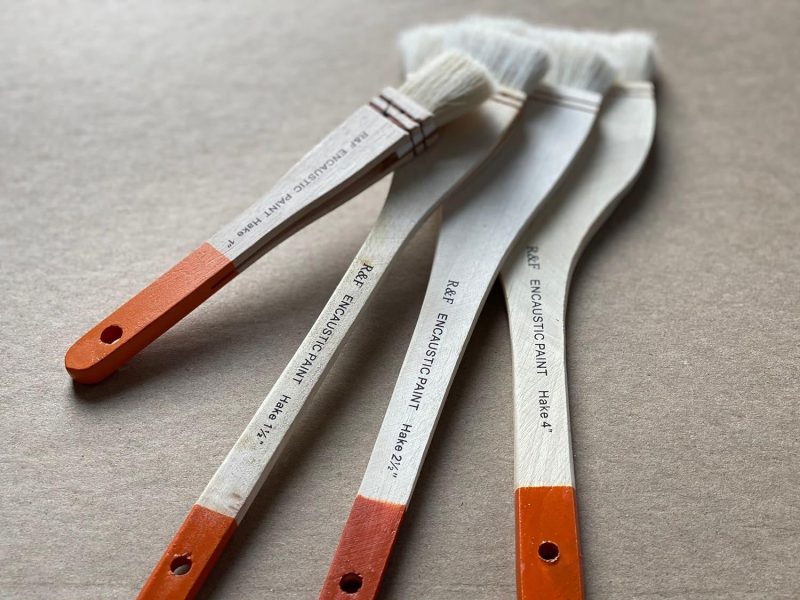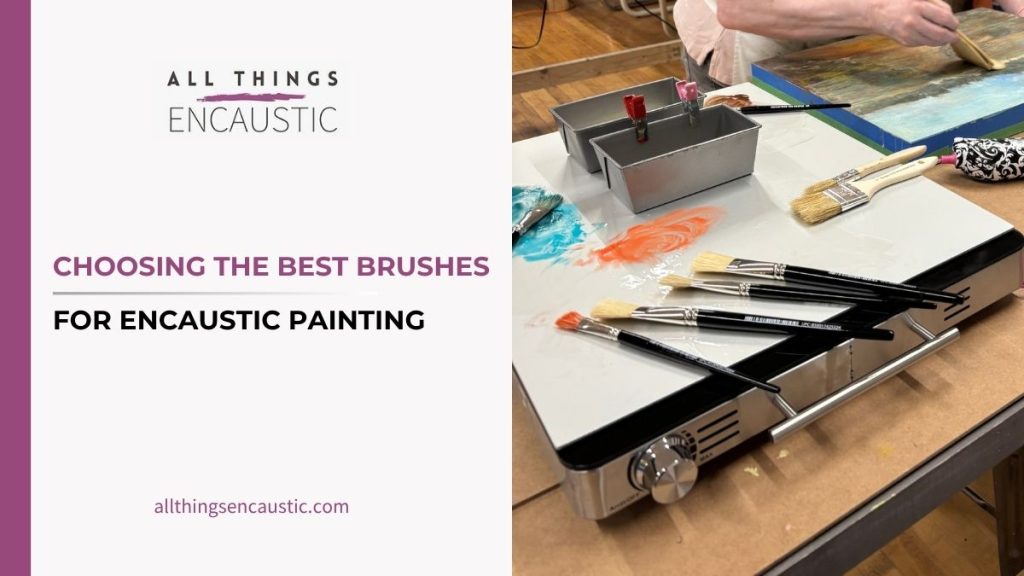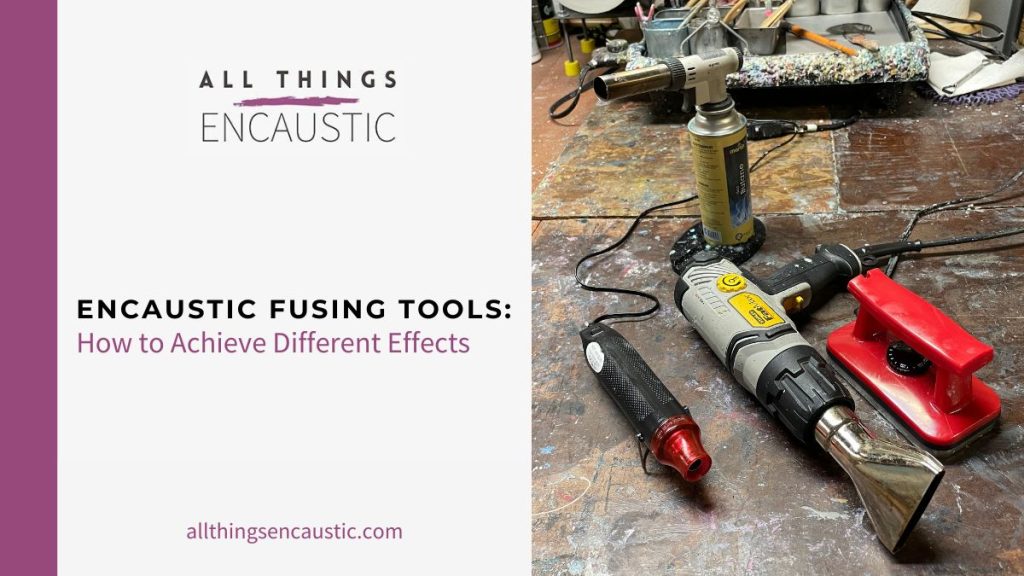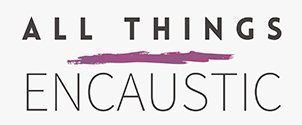The first thing to know is that not all brushes are suitable for encaustic painting. Working with molten wax requires paintbrushes that can withstand heat. In addition, choosing the right brush will make a difference in how you apply encaustic medium and paints.
Here’s what to look for — and some trusted brushes to try.
Synthetic vs. Natural Bristle Paint Brushes
Above all, don’t use synthetic brushes. Most synthetic fibres will melt or curl when they come into contact with hot wax. Likewise, avoid brushes with plastic handles or ferrules — heat can easily warp or loosen them.
Wooden-handled, natural-hair paint brushes are the clear choice for encaustic work. Natural-bristle paint brushes are distinguished primarily by the type of animal hair they’re made from.
- Chip brushes are inexpensive hog-hair brushes.
- Artist-grade hog bristle brushes come in a variety of styles and shapes (flats, brights, filberts, rounds, fans, etc.) and can range from inexpensive to high quality.
- Goat hair brushes, such as traditional Japanese hake brushes, are softer and perfect for laying down thin, even coats when you want a smooth surface.
Chip Brushes
Chip brushes — the inexpensive, disposable brushes you can find at hardware stores — are typically made with natural hog bristle (also called boar bristle). They are stiff and heat-tolerant, making them well suited for encaustic work. One drawback is that they tend to shed brush hairs, which can end up in your painting. The ferrule is usually a crimped metal band, and the handle is plain, unfinished wood.
Artist-grade Hog Bristle Brushes
On the other hand, artist-grade hog bristle brushes are tightly constructed with well-set bristles and quality glue. They’re:
- More expensive, but more durable
- Designed for precision and control
- Available in a variety of shapes — flats, brights, filberts, rounds, and fans
Brands like Enkaustikos and R&F make artist-quality hog bristle brushes specifically for encaustic with durable, enamelled wood handles
Goat Hair Hake Brushes

Goat hair, often used in hake-style brushes, is much softer than hog bristles.
A hake brush is a traditional Japanese flat brush with a long, flat wooden handle and soft, dense bristles, typically made from goat hair.
Choose artist-quality goat-hair brushes to create a smooth encaustic surface — the soft bristles glide over the surface, leaving minimal brush marks.
How do you pronounce “Hake”?
English speakers often struggle with the pronunciation of hake. It is not “hockey” and it does not rhyme with “cake.” The word comes from the Japanese term for flat brushes, 刷毛, pronounced “hah-keh” — two syllables, with emphasis on the first.
Listen to this Instagram clip for the correct pronunciation.
Styles of Brushes to buy for Encaustic Painting
For encaustic painting, you’ll want brushes in a range of sizes and styles — from small rounds for detail to wide flats or hake brushes for broad strokes. Using different sizes will help you vary your marks, adding visual interest and strength to your composition. Over time, you’ll discover which brushes best suit your way of working.
- When I started, I only used chip brushes — but once I tried artist-grade hog bristle brushes and hake brushes, I immediately noticed the difference in control and responsiveness.
- Hake brushes are best for applying encaustic medium.
- I also recommend buying a selection of these R&F brushes.
- And, I quite like this small angled hog brush sold by Enkaustikos.
Cleaning Encaustic Brushes
When a brush is used with encaustic, it’s dedicated for life; wax and pigment embed into the bristles. Never use solvents to clean encaustic brushes. Instead, use soy wax or beeswax to clean your brushes.
Tip: Write “medium” on the handle of one brush with a Sharpie to keep it dedicated to encaustic medium only. This keeps your pot of encaustic medium free from tinting with coloured paints.
Which are your favourite encaustic brushes?
To find your favourite brushes, experiment with a variety. Try different shapes, sizes, and bristle types to see how they affect the wax.





Ugh! I noticed this post is pretty recent and I clicked link for R&F brushes and they are “currently unavailable” bec they are made in China.
Oh no — I should have given R&F a heads-up that I was posting this so they could make sure Amazon had more stock! If you check now these are back in stock. https://amzn.to/48FcK9i & https://amzn.to/47mjVAK